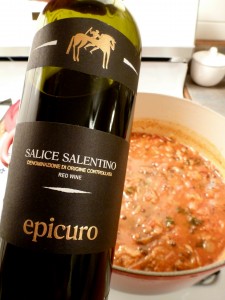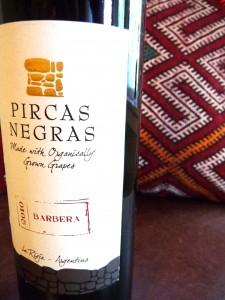The Messy Heel Of Italy’s Boot
When writing about a wine for this blog, I like to do a little casual research, consulting the tomes weighing down the coffee table. Usually I find they’re in general agreement about a particular varietal or region and I glean various complementary tidbits of information from each.
However, in the case of Puglia, the heel of Italy’s boot, my two favorite sources conflicted so completely, I didn’t know what to think. Both The Sotheby’s Wine Encyclopedia by Tom Stevenson and The Oxford Companion to Wine by Jancis Robinson agree that “a great many ordinary wines are still produced” (Stevenson) in Puglia. Beyond that, it’s as if I were reading about two different wine regions.
Stevenson concedes that in the 1970’s, most of Puglia’s wines “were seen fit only for blending or for making vermouth,” but he strikes a much more optimistic tone than Robinson, noting that Puglian winemakers “radically” transformed the industry and “various changes have greatly improved the situation.” Lower yielding varieties have been introduced, he explains, and winemakers moved “away from the single-bush cultivation, known as alberello, to modern wire-trained systems.” All in all, Puglia shows “renewed promise.”
Robinson sounds an altogether more pessimistic note, mourning the demise of single-bush cultivation. She points out how “Many growers have taken subsidies from the European Union to grub up their vineyards but, unfortunately, many of these were of low-yielding bushvines, while those remaining tend to be high-cropping inferior varieties planted on fertile soils.” Even in DOC zones, “High yields are the rule, and a significant number of DOCs have lost credibility with excessively tolerant production limits.”
What to think? I turned to my old standby, André Dominé’s Wine, for a tie-breaking opinion. (more…)







